There are many reasons to visit India. From the colorful historical traditions, spiritual retreats, and healthy yoga courses, India is a dream destination for many.
I’ve personally traveled India for more than 4 years and explored 12 states, and I have a lot of great things to say about this beautiful country. But it also has challenges.
In order to best plan an India trip, you’ll want to understand these downsides.
Here are 13 reasons not to visit India:
- It’s Crowded
- It’s Noisy
- It’s Dirty
- It’s Full of Animals
- It’s Polluted
- It’s Hot
- It Can Be Unsafe for Female Travelers
- The Tap Water Could Kill You
- The Poverty Is Heartbreaking
- Traffic Accidents are Common
- Delhi Belly is Common
- You’ll Pay Higher Prices Than Locals
- Mosquitos and Malaria Concerns
You won’t want to miss a reason, so you can plan a trip that considers India’s positives and negatives.
If you’re traveling here, having realistic expectations can help you plan a memorable trip, ensuring that you’re prepared for the bumps along the road and can truly relish India’s beauty in abundance.
In the following sections, I’ll delve deeper into each point, offering fast facts, personal stories, and, most importantly, the silver lining that often accompanies these challenges.
Let’s embark on this journey together.
Planning a trip to India at some point? Check out my free ebook to help you save time and money, and avoid headaches. After +4 years in India, I’ve made plenty of mistakes, and this guide shares what I’ve learned so you can have a smoother trip.
13 Reasons Not To Visit India
1. It’s Crowded
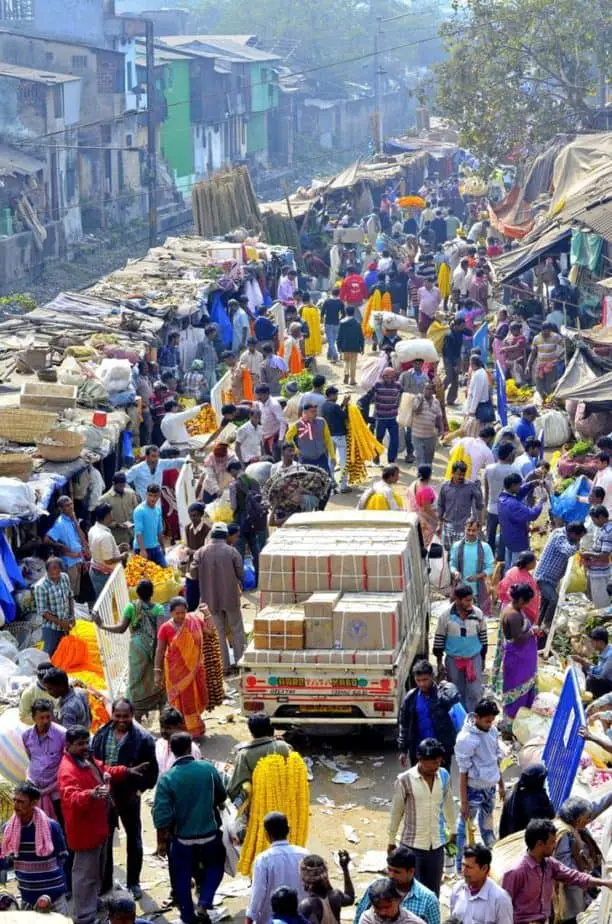
India, with its diverse culture and vast landscapes, is also home to more people than any other country.
How crowded is India? As of April 2023, when it edged past China’s numbers, India’s population was recorded to be approximately 1.42 billion, as reported by World Bank.
Cities like Mumbai and Delhi are densely populated, bustling with life at every corner. Even the smaller places have people everywhere.
As my mom, aunt, and I drove back from the airport for their first trip, we were heading to the small city of Tiruvannamalai. And even though it was 3 a.m., my mom still remembers seeing so many people. “One guy was walking his cow” is one noteworthy memory she has mentioned.
For a foreign traveler, this can be quite overwhelming. There’s a distinct lack of personal space, and it’s not unusual to find oneself elbow-to-elbow with strangers on busy streets or packed public transport.
However, there’s a silver lining to this. Being in such environments has honed my confidence and assertiveness. I’ve learned to stand my ground, ensuring I get the services I need without waiting indefinitely.
Plus, amidst all this chaos is the spirit of the Indian people. Their resilience and ability to find humor even in trying situations are awe-inspiring. I remember joking with a chaiwalla (tea seller) about how the bustling crowd felt like an obstacle course. He laughed, handing me my tea, and said, “Every day is an adventure in India. That’s the charm of it.”
Read more: Learn hacks and tips to safely getting around India
2. It’s Noisy
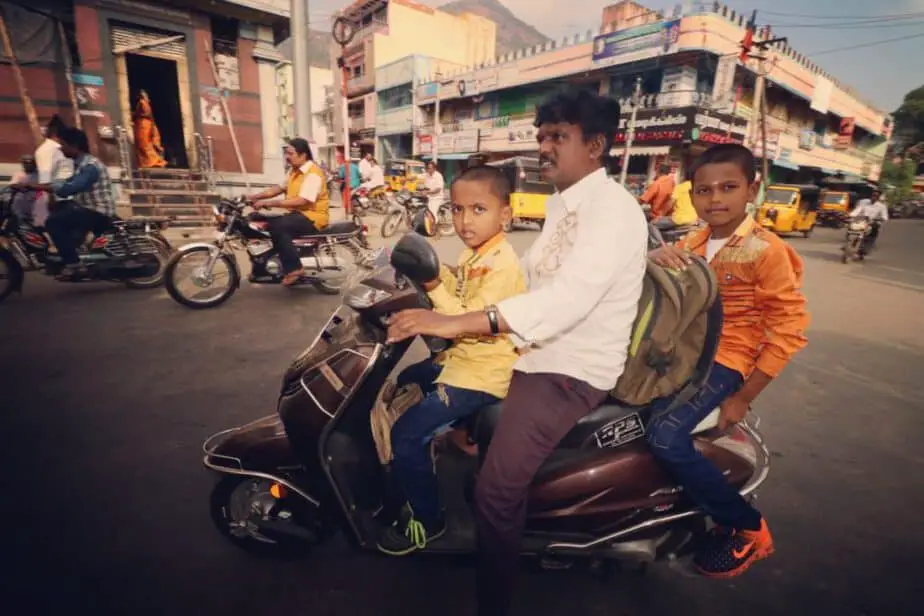
India isn’t just colorful in terms of its landscapes and culture; it’s also an auditory explosion, which is a nice way of saying noise pollution.
The symphony hits you when you step out of the airport. A significant part of this is the traffic.
Surprisingly, in India, honking isn’t seen as impolite but rather as a way of communicating on the roads. From trucks with “Horn OK Please” painted on their backs to the continuous beeping in bustling city areas, it’s an integral part of Indian driving etiquette.
Beyond just the roads, the soundscapes of India are vast and varied. Temples often blare devotional songs, especially during festivals or special occasions. The daily calls to prayer from the mosques punctuate the day, starting at dawn and continuing at intervals till nightfall.
As a traveler, one is constantly being approached—salesmen showcasing their goods, eager tour guides promising the best experience, and rickshaw drivers hailing you for a ride.
But as with everything in India, I found my rhythm amidst the noise. On my subsequent visits, armed with the knowledge from my previous trips, I chose to rent a place slightly away from the city center. It turned out to be the best decision I made.
For over three years, I had the best of both worlds—the vibrancy of the town within reach and the serene sound of crickets to lull me to sleep each night. It’s about finding balance, and once you do, the symphony of India, in all its intensity, becomes music to the ears.
Read more: Is Living in India Hard? A Digital Nomad’s Perspective
3. It’s Dirty
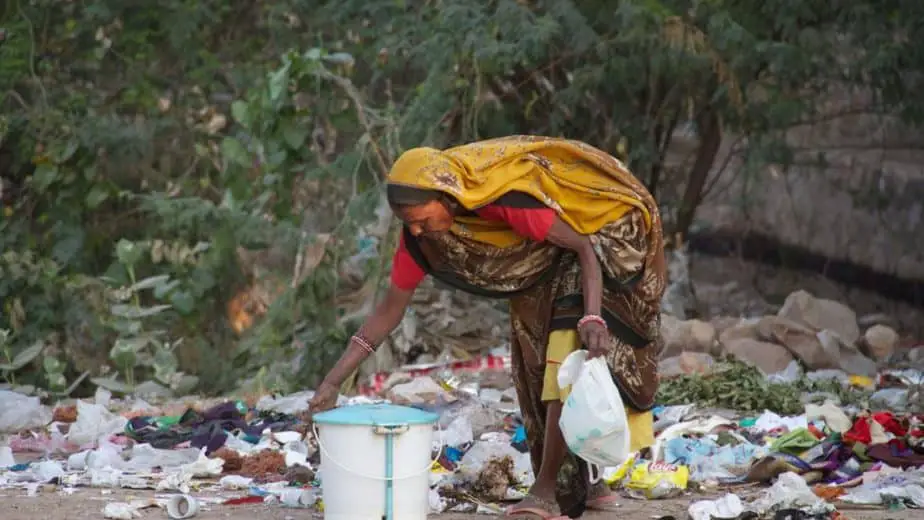
India is a mesmerizing country, but one can’t help but notice its sanitation and waste management challenges. With over a billion people and rapidly growing urban areas, the system often struggles to keep up.
Regular trash removal isn’t a given in many parts of the country. For instance, there was no direct waste pickup from my residence during my time in Tiruvannamalai. Every time my trash can filled up, I’d have to take a little drive to a communal dumpster a few blocks away. And sometimes, even this dumpster was overflowing.
In larger cities, the situation can be more glaring. Streets sometimes become dumping grounds, and large mounds of garbage can be seen at intersections or vacant plots. When I first landed in a neighborhood in Chennai, I was taken aback by the weekly collection of waste from the locality.
But it’s essential to understand that India is vast and varied. While waste management is a challenge, some places shine for their cleanliness.
Chandigarh, known for its modern architecture and urban design, is impressively tidy for a city its size. The revered mountain in Tiruvannamalai, a sacred site, is impeccably maintained, and it always felt special to hike there, especially during the quieter night hours.
Another pleasant surprise was Kerala. Known as “God’s Own Country,” it’s not just the scenic beauty that impresses but also its relative cleanliness. When I traveled there with my mom and aunt after experiencing the hustle and bustle of Delhi, we were genuinely amazed. The streets were neat, and there was a noticeable absence of stray animals.
It felt refreshing and underscored the fact that India, with all its challenges, also offers pockets of pristine beauty.
Plus, there’s a movement to clean up India, which is gaining success.
However, before you pack your bags and head to these cleaner destinations, brace yourself for a unique aspect of India’s streets – the animals. But that’s a story for our next section.
Read more: Best Times To Visit India’s Most Popular Destinations
4. It’s Full of Animals
One of India’s most iconic and unique aspects is the variety of animals that freely roam its streets. Whether you’re in a bustling city or a tranquil countryside, it’s a common sight to see many creatures navigating their way just as you are.
- Cows: Often regarded as sacred in Hinduism, cows meandering about is a norm. You’ll find them lounging under trees, holding up traffic, or casually strolling the lanes. However, it’s not all serene; once, a cow with a pair of formidable horns decided I was worthy of a chase across the street. An amused holy man, probably accustomed to such antics, couldn’t contain his laughter at my expense.
- Stray Dogs: India has a significant population of stray dogs. While many are harmless and content with lazing around, others can be territorial. A potential concern is rabies. According to a report, India has 17.16 million stray dogs. Another report claims India accounts for 36% of rabies deaths, the highest in the world. Always exercise caution and avoid petting or feeding them.
- Donkeys, Horses, and More: From donkeys hauling construction materials to horses pulling carts and even occasional nervous ones that might kick (I came close to learning this the hard way), these animals are an integral part of the Indian streetscape. And it’s not just limited to them. In various parts, you might spot monkeys causing mischief, chickens darting around, or even majestic elephants, especially in regions like Kerala and Jaipur.
The positive side? These encounters have, for the most part, been harmless. Four years and numerous close calls later, I’ve remained safe.
The animals make for fantastic photo opportunities and add a distinct charm to India. It’s a world away from the predictable streets of Michigan where I grew up, and that, in many ways, is the magic of India.
Read more: How To Handle Culture Shock in India
5. It’s Polluted
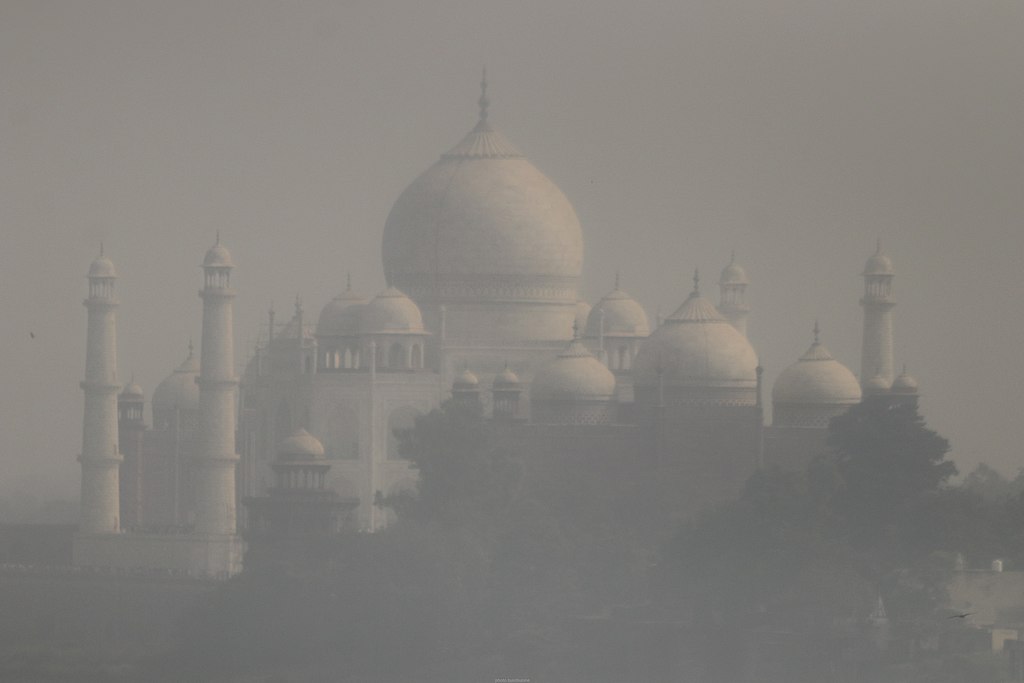
India’s rapid industrialization, urbanization, and population explosion have led to significant environmental challenges. Pollution, especially air pollution, is one such issue, and it’s not just restricted to the colossal cities. Even smaller towns and historically cleaner areas aren’t immune.
Fast Fact: India is the second most polluted country in the world. According to the World Air Quality Report, in 2019, 21 out of the world’s 30 most polluted cities were in India.
My personal experiences corroborate this data. Tiruvannamalai, where I resided, often lay under a shroud of smog. Picture this: after a vigorous hike to soak in panoramic views of the town, you’re greeted by a gray, clouded vista, masking the details below.
But it’s not just about reduced visibility. The tangible aspect of pollution is even more bothersome. Trucks rumbling past, spewing thick black exhaust, make for an unpleasant experience. I’ve had more than a few instances where an unexpected mouthful of this sooty emission marred an otherwise peaceful walk.
However, every cloud has a silver lining. During the global pandemic, with restrictions in place and reduced human activities, there was a noticeable drop in pollution. The cacophony of urban life ebbed, replaced by the ambient sounds of nature.
Living outside the city, I was cocooned in this serene environment, and it was both refreshing and recharging. The air felt purer, the skies clearer, and in that period, I got a glimpse of the tranquil beauty that India could offer away from its bustling centers.
Read more: Common Travel Mistakes in India
6. It’s Hot
India’s vast topographical differences and expansive landmass result in diverse climatic conditions. However, intense heat remains a recurring theme for many parts of the country, especially during the summers.
Fast Fact:
Here’s a brief table showcasing the average temperatures in some of the major cities and tourist destinations:
| City | Average Low (°C/°F) | Average High (°C/°F) |
| Delhi | 25 / 77 | 40 / 104 |
| Mumbai | 27 / 81 | 33 / 91 |
| Chennai | 28 / 82 | 36 / 97 |
| Rishikesh | 20 / 68 | 35 / 95 |
| Goa | 24 / 75 | 31 / 88 |
| Agra | 25 / 77 | 38 / 100 |
| Kolkata | 26 / 79 | 35 / 95 |
Tiruvannamalai was a trial by fire for me. The scorching heat was ever-present, and I found myself sweating profusely on most days. Heat rashes initially posed a significant challenge, with a particularly severe episode at Ramoji Film City near Hyderabad as a painful reminder.
But, as time progressed, I adapted. The once-overbearing heat transformed into a familiar presence. There was even a phase when I went an entire year without the comforts of an air conditioner, relying solely on the cool relief provided by a fan.
Interestingly, after years in the sun-soaked plains of South India, a visit to the chilly terrains of Ladakh had me yearning for warmth. Wrapped in a light jacket, I reminisced about the hot and languid summer days in Tamil Nadu.
Growing up in Michigan, with its snowy winters, I never thought I’d prefer heat. Yet, here I was, wishing for the sun’s embrace amidst the cold of the mountains.
Read more: Packing List for India for Men & Women
7. It Can Be Unsafe for Female Travelers
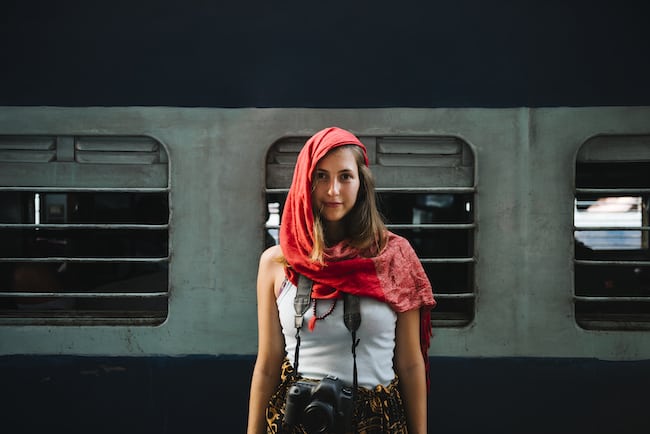
While India is an enchanting destination filled with rich culture and scenic beauty, safety remains a pertinent concern, particularly for female travelers.
Fast Facts:
- India ranks high among nations where women might experience discomfort due to staring or unwarranted attention.
- Incidents of molestation, eve-teasing (catcalling), and more serious offenses have been reported by tourists in various parts of the country.
During a daytime stroll in Tiruvannamalai, a friend of mine found herself being grabbed by a man. She managed to fend him off, but the memory remains etched as a dark mark on her Indian adventure.
Further, a girlfriend of mine often spoke about the discomfort she faced due to the aggressive advances from local men. From my experiences, I can attest to the unnerving and often incessant stares directed towards foreign women. It’s unwanted and relentless attention that can damage the overall experience.
However, on a positive note, despite her harrowing experience, my friend still cherishes her time in India. She believes that while there were certain challenges, they did not overshadow the enriching and vibrant experiences she enjoyed during her travels.
Safety Tips for Female Travelers:
- Carry a Defense Tool: My friend had an innovative yet effective strategy of carrying a rock in her hand, offering her a sense of security and a means of self-defense.
- Be Vocal: If harassed, don’t hesitate to raise your voice or seek assistance. The majority of locals are kind-hearted and will come to your aid.
- Keep Emergency Numbers: Always have local emergency numbers saved on your phone and share your whereabouts with a trusted person.
- Avoid Sharing Accommodation Details: Be cautious about divulging where you’re staying to strangers.
- Limit Alcohol Consumption: Although I personally abstain from alcohol, it’s crucial to note that overindulgence might make one more vulnerable to dangerous situations. If you choose to drink, do so responsibly.
In conclusion, while challenges persist, a cautious and prepared approach can still allow female travelers to explore and appreciate the diverse beauty of India.
Read more: Differences between Dating in India vs the USA
8. The Tap Water Can Kill You

Concerns regarding its tap water can somewhat overshadow the charm of India’s culinary scene. It’s a topic that any traveler, new or experienced, should be well-versed in before embarking on their Indian journey.
Fast Facts:
- It’s estimated that a significant percentage of travelers to developing countries like India experience some form of traveler’s diarrhea. Much of this can be attributed to consuming contaminated water or food.
- Tap water in many parts of India is not purified to standards acceptable for drinking, leading to a high risk of water-borne diseases (which can lead to death).
To navigate this challenge, visitors are typically advised to either buy bottled water, filter their own water, or boil tap water before consumption. Even when it comes to brushing one’s teeth, the use of tap water is discouraged.
Moreover, when dining out, be vigilant about the cutlery and dishes. Wet plates or forks can indicate that they were rinsed with tap water. While it might seem like a minor detail, such oversights can potentially lead to stomach upsets.
On the bright side, I’ve navigated the terrains of India for over four years; despite the occasional oversight, I’ve never fallen seriously ill. It’s a testament to the fact that while there are challenges, they are certainly manageable with a bit of precaution.
Moreover, bottled water is widely available and affordable nationwide, making it relatively easy to stay hydrated and safe. I had a filtered water machine at my house and some guesthouses have them.
While tap water issues are a reality in India, they’re far from a deal-breaker. With careful attention and basic preventive measures, one can easily enjoy the vast array of experiences the nation has to offer.
Read more: Is it safe to eat raw vegetables in India?
9. The Poverty is Heart-Breaking
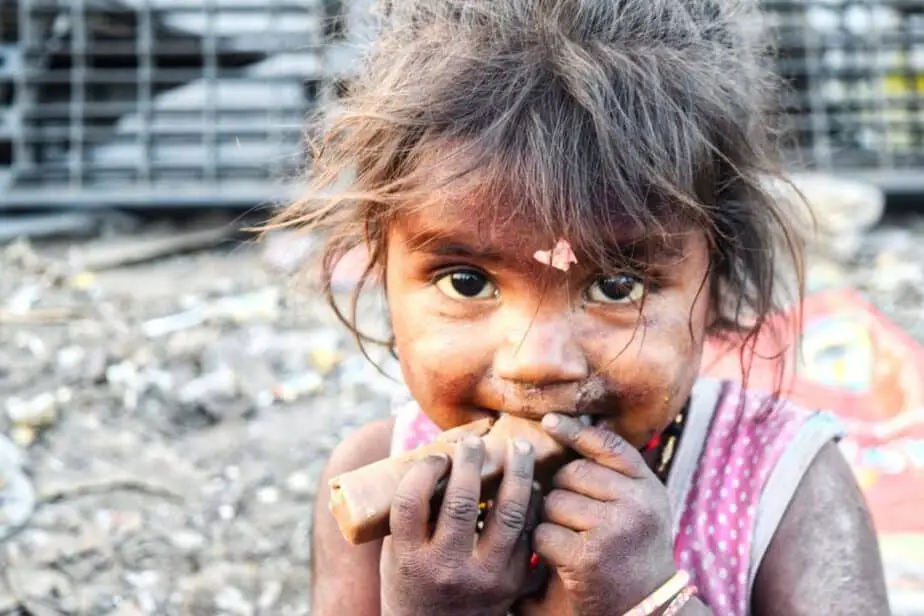
India’s cultural richness, historical monuments, and natural beauty often overshadow another stark reality many visitors confront: striking poverty. This aspect of the nation can deeply affect travelers, both emotionally and morally.
Fast Facts:
- According to the World Bank, a significant percentage of India’s population lives below the international poverty line of $1.90 per day.
- While India has witnessed impressive economic growth in the past decades, disparities in wealth distribution remain, leading to a vast population still living in extreme poverty.
During my extensive travels through India, I’ve witnessed scenes that have stayed with me and reshaped my perspective on life.
In bustling cities, it’s not uncommon to see people sleeping on the streets, their only shelter being a thin sheet or a makeshift tent. The contrast is vivid when skyscrapers loom in the background, symbolizing the nation’s economic progress while its citizens sleep on its pavements.
In Chandigarh, a city known for its urban design and architecture, the slums near my Airbnb present a different story. During the monsoon, the thick mud streets become nearly impassable, making daily life for its residents even more challenging.
A recurring and heart-wrenching sight is that of women, often with babies cradled in their arms, reaching out for alms. The innocence of childhood is starkly contrasted when kids, instead of playing, approach you at iconic tourist sites, their hands outstretched, asking for money.
The Emotional Impact: Encountering such scenes is a powerful reminder of the disparities that exist not just in India but globally. It’s a humbling experience that brings forth the realization that not everyone gets a fair shot at life.
Yet, India also teaches resilience and hope. Amid adversity, the spirit of the people shines through, whether it’s in their smiles, the colorful festivals they celebrate with gusto, or the dreams they chase relentlessly. The journey through India is as much an external exploration as an introspective one.
Read more: Dangers for Tourists in India
10. Traffic Accidents are Common
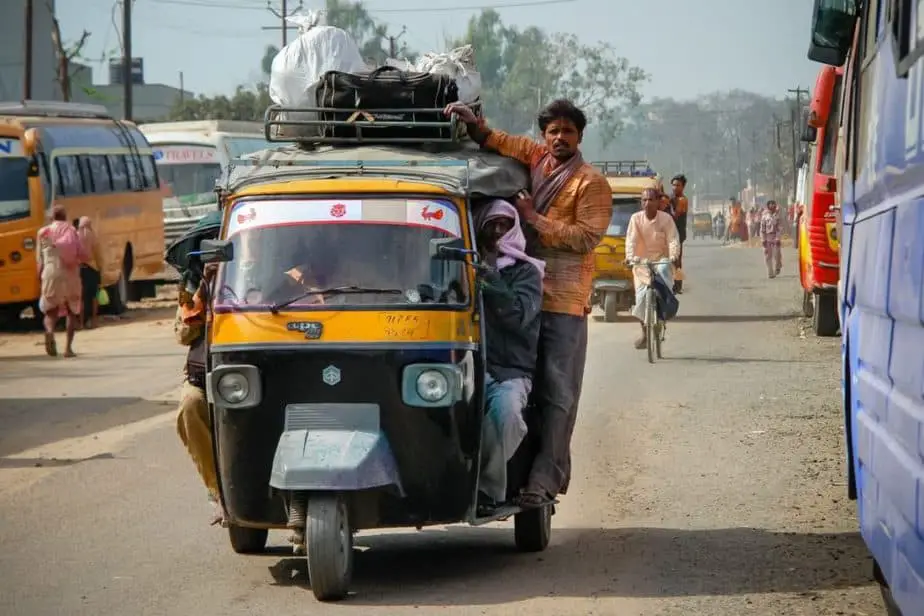
India’s bustling streets, filled with cars, rickshaws, mopeds, bicycles, and pedestrians, can be a sensory overload for many, especially those unfamiliar with its unique rhythm.
Add to this the mix of honking, the occasional cow crossing the road, and a general sense of organized chaos, and it’s easy to see why traffic accidents might be a common concern.
Fast Facts:
- According to the World Health Organization, India ranks high on the list of countries with road traffic accident deaths.
- Factors contributing to the high rate of accidents include overloading, speeding, and the lack of stringent traffic law enforcement.
My time in India has certainly given me some heart-stopping moments on the road.
One memory that stands out was when I wiped out on a moped after skidding on loose gravel while pulling into a gas station. My girlfriend didn’t fare much better. She had her own set of spills, notably once after hitting a speed bump at an imprudent speed. Her driving skills were… well, let’s just say they needed some work (I still love you, though, babe).
These personal encounters with the asphalt weren’t the only road accidents I witnessed. A harrowing sight was that of a man sprawled on the road, a bloody gash on his forehead, with a huddle of onlookers surrounding him, waiting for medical assistance. In another incident, I saw a woman on a moped collide with someone, leaving her scraped and shaken.
Yet, for all the perceived mayhem, there’s a peculiar rhythm to Indian traffic that, once understood, can be navigated.
When I first set foot in India and saw the whirlwind of traffic, I braced myself for witnessing daily accidents. But in reality, it’s astounding how the traffic weaves and flows, given the volume and apparent disregard for strict traffic norms.
Over time, I grew more confident driving my scooter and even found joy in maneuvering through the streets on a scooter. I fondly remember circling the sacred mountain in Tiruvannamalai or venturing into serene villages where life seemed to move more languidly. Despite the traffic’s challenges, it became an integral and, dare I say, enjoyable part of my Indian adventure.
Read more: Do You Need A License To Drive A Scooter In India?
11. Delhi Belly is Common
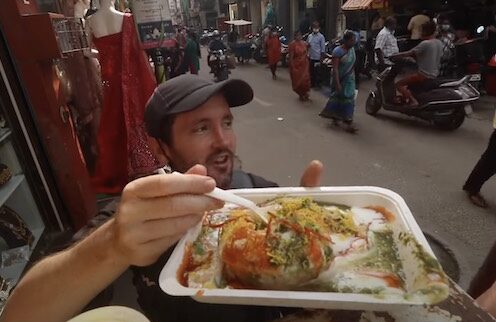
On more than one occasion, I fell victim to the infamous “Delhi Belly.”
Unaccustomed to some of the local bacteria, my stomach waged a fierce protest after indulging in some tantalizing street food. Local delicacies can be incredibly enticing, but they come with their fair share of risks, especially if one isn’t cautious about where to eat.
Fast Facts:
- Many travelers to India experience gastrointestinal problems, often termed “Delhi Belly.”
- – This can be due to various reasons, such as consuming untreated water, street food hygiene, or simply the body adjusting to new bacteria.
However, experiencing this has made my gut seemingly more robust and adaptable. Also, India’s vast array of flavors, spices, and unique dishes are unparalleled.
I’ve had some of the best meals of my life in tiny, unassuming eateries or from roadside stalls. So, while being careful is crucial, don’t let the fear of an upset stomach keep you from savoring the country’s culinary treasures.
Read more: India Travel Hacks Learned After +4 Years
12. You’ll Pay Higher Prices Than Locals
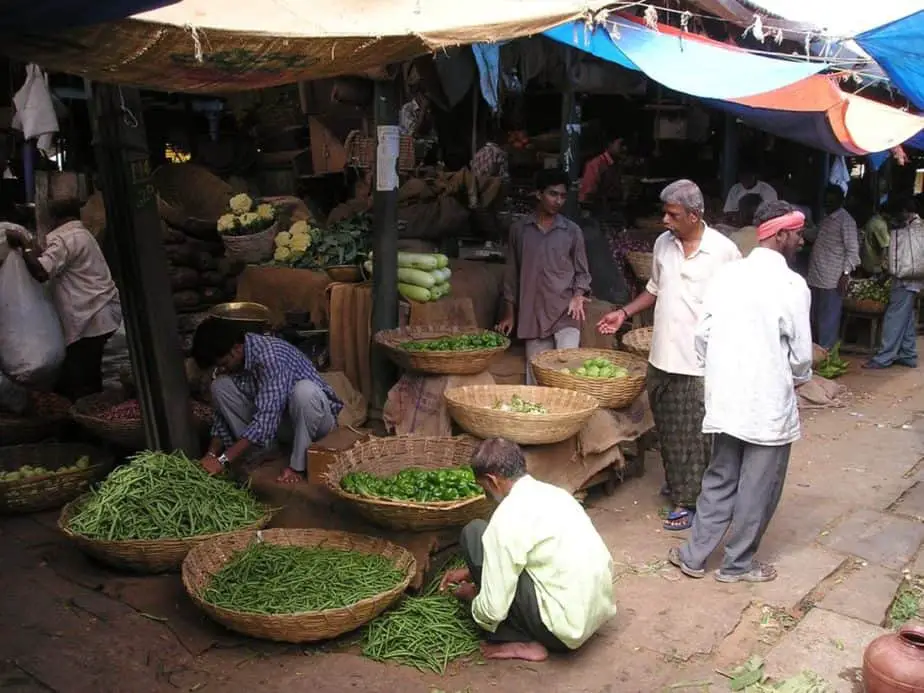
Walking through the bustling markets of India, I quickly realized that the price first quoted was often the “tourist price.” On one occasion, I found a beautiful scarf I wanted to buy as a gift. The quoted price was exorbitant, and it took ten minutes of haggling before arriving at a more reasonable figure.
Fast Facts:
- Many tourists often find that prices quoted to them, especially in markets, are significantly higher than what locals pay. It could be 3 to 10 times the actual price.
- Bargaining is an integral part of shopping in many local bazaars and markets in India.
However, with time, I began to see bargaining not as an annoyance but an art form and a cultural experience. The back-and-forth, the banter, the feigned walkaways, they all became part of the fun.
In the process, I got better deals and had enriching interactions with local vendors, understanding their life stories and the love they put into their craft.
Read more: Tourist Scams in India
13. Mosquitos and Malaria Concerns

During my travels, especially in the monsoon season, mosquitoes became an almost constant companion. Whether I was trekking in the forests or relaxing in a beach shack, the buzz of these tiny creatures was ever-present.
I was particularly cautious after hearing about the risks of malaria and dengue. Staying informed about outbreaks and taking precautions became second nature, from applying repellents to sleeping under nets.
Fast Facts:
- India has many malaria cases, with certain regions being more endemic than others.
- Apart from malaria, dengue fever, transmitted by mosquitoes, is also a concern in several parts of the country.
But here’s the brighter side: Despite the initial discomfort, these experiences made me more resilient and adaptable. I learned to be more prepared to be proactive in ensuring my safety.
Plus, the mesmerizing beauty of India, with its lush forests, pristine beaches, and majestic mountains, more than compensates for the minor inconveniences these mosquitoes present. As with everything, it’s all part of the grand adventure that is India.
Read more: How To Avoid Mosquito Bites on Your India Trip
Is India Worth Visiting? A Resounding Yes!
Despite the challenges in the previous sections, my enduring love for India hasn’t waned over the years. In fact, the very challenges that sometimes seem overwhelming have only deepened my bond with the country. Here’s why.
1. The People: The warmth and hospitality of the Indian people are unparalleled. Despite language barriers or cultural differences, I’ve often found myself treated as an honorary member of the family, welcomed into homes, and given a taste of their everyday life.
2. Cosmopolitan Hubs: Cities like Delhi and Mumbai pulse with life, mirroring the dynamism of world capitals. With their historical monuments, bustling markets, vibrant nightlife, and rich tapestry of cultures, these cities are a traveler’s dream.
3. Nature’s Retreat: The breathtaking landscapes of Ladakh, with its stark mountains and serene monasteries, are a sharp contrast to the green, undulating beauty of the Tamil Nadu villages. These settings are not just aesthetically pleasing but also offer a tranquil retreat from the urban hustle.
4. Laid-back Beaches: Goa, with its sandy beaches, azure waters, and vibrant nightlife, offers the perfect setting for relaxation and rejuvenation. It blends India’s rich history with a touch of Portuguese influence, making it truly unique.
5. Culinary Delights: Indian cuisine is a tantalizing explosion of flavors. The delicate, rice-based dishes of South India stand in delightful contrast to the robust, spicy gravies of the North. And street food? That’s an adventure in itself! From steaming samosas to tangy chaats, the streets are a gastronomic playground.
6. Value for Money: India remains incredibly affordable despite the ‘tourist prices.’ Luxuries that might break the bank in Western countries – like dining out, spa treatments, or custom-made clothes – can be enjoyed frequently and without guilt.
7. A Learning Experience: Through all the hurdles and hiccups, traveling in India has been my greatest teacher. It has imparted lessons in patience, adaptability, and understanding. It’s taught me to find joy in the little things and shown me the boundless resilience of the human spirit.
So, is India worth visiting? Absolutely. The challenges are real (so check the latest travel advisories), but so are the rewards. Over the last four years, India has become an inseparable part of my life’s journey, offering experiences that are rich, varied, and immensely rewarding.
Read more: Is Life in India for Foreigners Safe and Worth It?
FAQs
Is India the dirtiest country?
India faces significant challenges related to waste management and pollution. However, labeling it as “the dirtiest country” is an oversimplification. India is vast and diverse, with places of pristine beauty alongside areas facing environmental challenges. Efforts are ongoing to address these issues, with numerous initiatives for cleaner cities and better waste management.
Why would anyone visit India?
India offers a rich tapestry of history, culture, and natural beauty. From the snow-capped mountains of Ladakh to the golden beaches of Goa, from ancient temples to modern cities, India provides a unique travel experience. The diverse cuisine, vibrant festivals, and warm hospitality of the people make India a compelling destination for travelers.
Will India ever be clean?
Cleanliness in India is a work in progress. The government and civil society are taking steps to improve sanitation and cleanliness standards through initiatives like the Swachh Bharat Abhiyan. Urban areas are increasingly adopting waste management practices, and there’s growing awareness about cleanliness and hygiene. It’s a collective effort that needs time, but positive changes are evident.
Why India is a bad place to live?
India has challenges like any country, including pollution, traffic congestion, and economic disparities. However, for many, the vibrant culture, tight-knit communities, and growing opportunities outweigh these challenges. It’s essential to remember that experiences vary greatly across regions and individuals.
Is it safe to travel to India?
Like any destination, safety in India depends on the region, the traveler’s awareness, and the precautions taken. Most visitors have a trouble-free experience. However, it’s vital to be informed about local customs, avoid isolated areas, especially at night, and be cautious of personal belongings. Solo female travelers should exercise extra caution.
Is street food in India safe?
Indian street food is delicious and integral to the country’s culinary landscape. However, travelers should choose busy stalls where the turnover of food is high. Observing how food is cooked and stored can also indicate its safety. It’s always advisable to consume freshly cooked food and avoid uncooked accompaniments.
Are there good medical facilities for travelers in India?
Yes, India boasts several world-class hospitals and medical facilities, especially in major cities. The country is also a hub for medical tourism. However, travelers should get comprehensive travel insurance before their journey.
Final Thoughts
Navigating India’s vast and diverse landscape is no doubt challenging. From grappling with its bustling crowds and confronting the persistent noise of its cities to managing potential health concerns with tap water and the ubiquity of Delhi Belly, traveling here is not for the faint of heart. Likewise, the discernible difference in prices for tourists and the often heart-wrenching scenes of poverty can cast a shadow on the experience.
However, despite these challenges, India remains an enchanting destination that offers far more than meets the eye. Its rich tapestry of culture, history, and natural beauty, combined with the genuine warmth and friendliness of its people, makes every hurdle worth the effort. India beckons with its promise of unforgettable experiences, tantalizing flavors, and lessons in resilience and joy. The trials might be many, but the rewards of visiting India are infinitely greater. After all, it’s the challenges that often lead to the most transformative journeys, and India promises a journey like no other.

